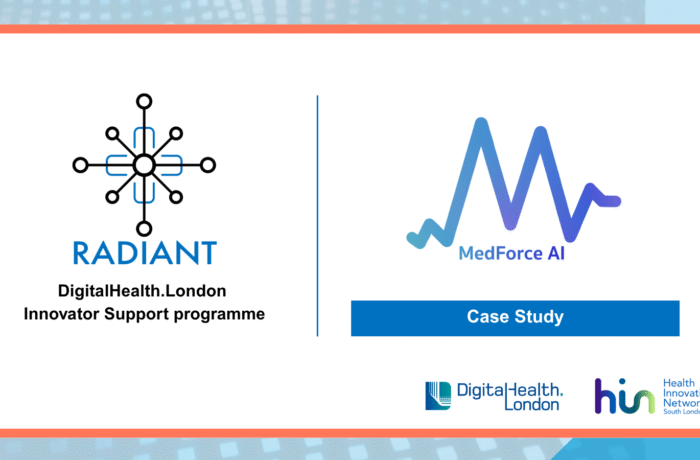Humanising Technology
Posted on
Artificial Intelligence and the future of health and care services, a roundtable discussion
Uscreates is a strategic design and innovation agency focused on improving health outcomes and experiences. As part of the launch of their new Research and Design Lab, Hatch; Uscreates hosted an interactive roundtable exploring the impact of artificial intelligence on the future of health and care services. In this post, Uscreates’ Design Director provides a snapshot of the event, emerging insights and the process of using scenario design to facilitate critical discussion.
What does the phrase Humanising Technology mean to you?
This was the introductory question we asked at our first creative roundtable discussion in December. It’s a concept that we’ve been experimenting with over the past few months, and unsurprisingly a question that evoked a range of critical and emotive responses from those who came along.
For me and the team at Uscreates, we see Humanising Technology as the opportunity to embed design as a core component in the creation, deployment and improvement of existing and emerging technologies; designing them with intent, to enhance the human experience rather than hinder it.
When applied to a digital health context, Humanising Technology is in part about ensuring digital products and services remain people and patient centred. It is about exploiting the advantages of technology to enable and drive better patient experiences, in and beyond the clinical health environment.
The 2 hour roundtable event brought together experts across health, technology and design to explore this concept, what it means and how we might better articulate it. On this occasion, we grounded the discussions and gave Humanising Technology context through the topic of artificial intelligence, and the impact it may (or may not) have on future health and care services.
Beyond simply providing a space for discussion and networking, these roundtable events aim to spearhead interactive, provocative and original dialogue on topics synonymous with technology and health. Using creative facilitation and future-casting approaches, this first event explored some of the probable, preferable and possible impacts of AI on health and care services over the coming years.
Using speculative scenarios to facilitate critical dialogue
 Using speculative future scenarios based in 2030; which included a robotically led birth, an AI powered mental health diagnostic and an implanted health monitor; participants were challenged to think beyond what we know today and explore the possibilities of AI, including the risks, opportunities and barriers ahead of us. Grounded in insight, foresight and current trends, these speculative design methods help remove our present biases and encourage us to openly imagine future possibilities (both preferable and possible). Based on these speculations we can then start considering what we need to do today to navigate us toward preferable futures, from policy creation to strategic service alignment.
Using speculative future scenarios based in 2030; which included a robotically led birth, an AI powered mental health diagnostic and an implanted health monitor; participants were challenged to think beyond what we know today and explore the possibilities of AI, including the risks, opportunities and barriers ahead of us. Grounded in insight, foresight and current trends, these speculative design methods help remove our present biases and encourage us to openly imagine future possibilities (both preferable and possible). Based on these speculations we can then start considering what we need to do today to navigate us toward preferable futures, from policy creation to strategic service alignment.
Emergent themes and insights
Alongside other activities and a keynote presentation from health futurist Maneesh Juneja, these scenarios drew out some thought-provoking and original discussions on the wider implications of AI and health. As expected, we left with more questions than we had answered.
Over the coming months we will be developing and building on these themes, and making them available to anyone interested in the topic.
- Designing out human bias
How do we prevent ourselves from building negative, inherent human bias into the process and creation of machine learning and artificial intelligence?
- Systems and infrastructure
How can we begin designing the wider systems and infrastructures to support the implementation and activation of AI powered health services?
- Data and ethics
How do we effectively design the process of collecting and mining health data? Should sharing health data take an opt-out approach? Who owns and manages this collected data?
- Government and national policy
What role should Government play in shaping and defining regulatory policies around Artificial Intelligence
- AI and the workforce
How do we start seeing AI powered services as an opportunity for extended intelligence and improved services, rather than just a replacement of the workforce?
- Barriers for activation
Who will pose the main barriers for activation, the patients or those providing and supporting these new services?
A huge thank you to those who offered their time and expertise to the session. If you would like to be involved in future events, would like to access the event scenarios or would like to be notified when research and insights are made available, then please get in touch via Robbie@uscreates.com, we’d love to hear from you.
Finally, many thanks to Digital Health London for including this write-up as part of their blog.


